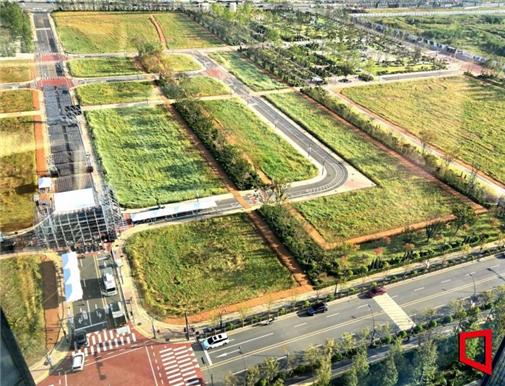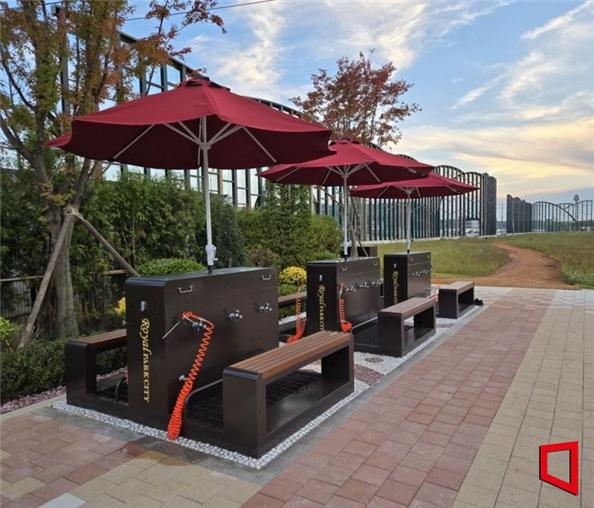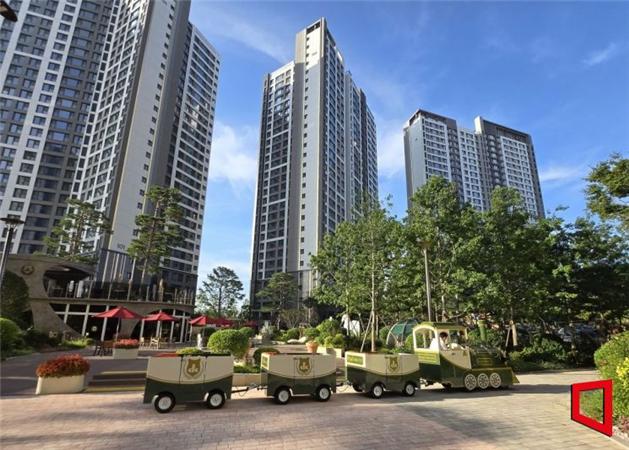“Healing Path in the Heart of the City”… Barefoot Loess Trail Opens at New Geomdan Royal Park City II

“I feel so grateful that they created such a wonderful loess trail that I even want to write a thank-you letter to this company (DK Asia). It’s amazing.”
On the afternoon of the 26th, in front of the loess trail at the apartment complex Royal Park City II in Seo-gu, Incheon. Resident Kim Jin-young (62), who lives just a 30-minute walk away, packs her lunch and visits the trail every day. That day too, she had been walking barefoot on the loess path for more than six hours since morning. Having undergone four surgeries and treatments for lung cancer, bile duct cancer, and thyroid cancer, Kim said her heavy body feels noticeably lighter when walking barefoot there. “Because of the aftereffects of surgery, I can’t clench my fists properly. But after walking all day on this path, I can grip like this.”

She switched from chemotherapy to natural healing methods and has been practicing barefoot walking for five years. Kim said, “I’ve been to earthing (barefoot walking) trails all over the country, but it’s rare to find a place where the effects are so noticeable like here,” adding, “The loess quality is so good that it can even be compared to the loess trail at Daemosan in Gangnam, Seoul, known as a healing mountain.” Earthing is a therapy that involves direct contact between bare feet and the ground, which is believed to neutralize harmful positive charges (free radicals) in the body with the earth’s negative charge, restoring electrical balance. Word of its health benefits has spread, making it increasingly popular nationwide.
Resident Lee Won-jong (63) said, “This trail is too good to keep to myself, so I’ve been sharing photos of it in a local barefoot-walking community with around 90 members.” He added, “Many people come just from seeing the photos, and when they actually walk here, they all say, ‘Why didn’t I know about this sooner?’ in amazement.”
The loess trail, which officially opened on the 20th, was created following suggestions from residents of Royal Park City II. Developer DK Asia reflected their opinions—“Since barefoot walking is popular these days, it would be great to have a loess trail in our community”—by constructing a 4.5 km-long loess path. Fine loess was mixed with decomposed granite and compacted to a thickness of 20 cm, ensuring proper drainage and preventing muddiness even on rainy days.
Compared to regular walking trails, the loess path absorbs impact better, reducing strain on the feet, while its soft and non-slippery surface makes it safe for both seniors and children. For added convenience, a foot care zone (washing station) that can accommodate up to 30 people simultaneously was also installed.
The buckwheat flowers scattered along the path enhance the joy of walking. Including the buckwheat fields, the total area is approximately 138,000㎡ (40,000 pyeong), the largest of its kind in Korea. DK Asia plans to extend the trail to nearby green areas, creating a 12 km-long “Loess Samship-ri Trail” in the future.
However, some sections overlap with the site of a new high school scheduled to begin construction next year, which may limit access. A DK Asia representative explained, “We plan to create a new loess trail in the buffer green area next to the washing station,” adding, “We will also plant 1,500 maple trees to create a seasonal maple tunnel offering different scenery throughout the year.”

“Living Space as Healing” … Development Philosophy Beyond Apartments

The loess trail is more than just a health amenity; it embodies DK Asia’s residential philosophy. Under the vision of “Healthy Rest, Life as Daily Healing,” DK Asia has expanded apartment complexes beyond mere living spaces into platforms for enhancing quality of life. The aim is to allow residents to enjoy nature, relaxation, culture, and health without having to travel far to holiday resorts. In fact, Royal Park City embodies this philosophy by realizing a “resort in the city.” Exclusive services for residents include in-house medical care, hotel-style three meals a day, private yacht operations, and shuttle buses.
More recently, a trackless electric train traveling at 5–7 km/h, called the Royal Train, was introduced. It is the first case of bringing amusement park-style content into residential services. The idea originated from a mini train installed at the daycare center within the Royal Park City II complex. After seeing it, DK Asia Chairman Kim Jeong-mo suggested, “It would be great to have a train that not only children but also adults can enjoy.” The concept was to expand even daily mobility into joy and healing.
Thanks to the wide distance between apartment buildings (60–97 m), it was possible to operate a 16 m-long train. The response has been so enthusiastic that residents line up to ride on both weekdays and weekends. It runs not only inside the complex but also as a tourism course connecting the buckwheat flower fields and the Loess Trail.
Chairman Kim personally leads the architecture and landscaping teams to visit famous architectural sites in Europe and elsewhere, applying lessons learned directly to domestic projects. The Entry Garden and Canalway inside Royal Park City II were inspired by the gardens of Villa d’Este in Italy. Resident Jung (50), who has lived there for 10 months, said, “It’s amazing to experience healing close to home, something that used to be possible only in the countryside or on distant trips,” adding, “I’ve realized that living spaces themselves can be healing.”
Royal Park City is Korea’s largest private urban development brand, pursued by DK Asia across eight project sites covering 4.07 million㎡ (approx. 1.23 million pyeong) and 36,500 households. The first two complexes, Geomam Station Royal Park City I and New Geomdan Royal Park City II, are already completed, with seven more planned. These sites are located in the core zones of Eco Meta City, a mega mixed-use urban project promoted by Incheon City.
Incheon is currently developing large-scale new urban areas in the Geomdan district, including Eco Meta City (1.96 million㎡), Royal Park City (2.0 million㎡), and Geomdan New Town (11.1 million㎡), totaling 15 million㎡. The housing supply alone will reach 100,000 units. Industry experts expect this development to shift Incheon’s urban hub from Songdo and Cheongna to Geomdan, marking a major turning point.




